Irishman in the Russian service, or Field Marshal Petr Petrovich Lassi
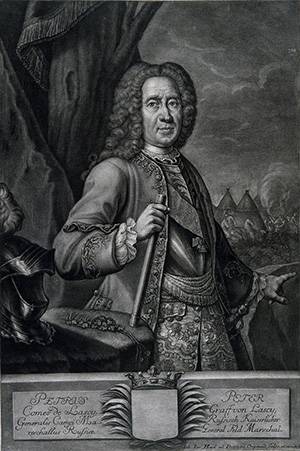
At the turn of the XVII – XVIII centuries, the usual way of Russia was shaken. The young sovereign Peter Alekseevich, with fierce energy and pressure, equipped the state, building his large-scale plans and immediately introducing them. The desire to finally reach the Baltic Sea inevitably led to a clash with Sweden, which in its potential fits well with the strongest states in Europe. To counter such a serious adversary, not only a large, well-trained and armed army was needed, but also officers and generals, capable and competent.
Russia has always been hospitable to foreigners, if they do not invade its limits in the composition of equestrian, foot or wheel-tracked raty, and come to serve and work. In a constantly belligerent and densely populated Europe, there was no shortage of people who knew a lot about military affairs. Many of the nobles who chose the path of war for their long or not very long life managed to serve several monarchs. Someone tried to seek good luck and fame in the New World, in distant colonies and trading posts. But there were those who carefully looked at the huge and little-known country in the east, where, according to rumors, the young king massively took to the service for a very decent salary by European standards for intelligent foreigners. And in the edge of the forests and swamps stretched a trickle of those who were ready to use the sharpness of their minds and swords for the benefit of Russia and their own moshny. One of these foreign military experts was a native of Ireland, who later became Field Marshal Pyotr Petrovich Lassi.
Under the banners of the three kings
Pierce Edmond de Lacey started his life on 30 in October on 1678 in Ireland. His family was rather old and deserved and had Norman origin - the ancestor of the future Russian field marshal arrived in England on the ships of William the Conqueror. At home, the boy could not sit and, like many other young offspring of noble families, whose main wealth consisted in a magnificent coat of arms, sonorous motto and fatherly sword, he began his military career in 13 years - the young man became a member of the War of Two Kings. England in the second half of the seventeenth century. survived painful metamorphosis, including the Civil War, the execution of the king, the dictatorship of Cromwell and the restoration of the monarchy.
The culmination of the vanity of the English throne was the Glorious Revolution, as a result of which William of Orange landed on the island, seized power and the crown from James II of Stewart. Stewart was a Catholic, and this did not add to his popularity in the country where Anglicanism prevailed. However, the overthrown king did not give up the fight - Catholic Ireland did not recognize the new monarch, and it was she who became the main stronghold of the supporters of Jacob Stewart, called Jacobites. It was in their ranks that the young De Lacey joined at the final stage of the war.
The position of the supporters of the curtailed Jacob by that time was very difficult - it was not necessary to wait for help from Louis XIV who had become steeped in the continental war. In July, the 1690 on the Boyne in the bloody battle of the Jacobites and the few French regiments were defeated by the troops of the English Expeditionary Force. Jacob II, having left his army, went into exile in France, and by the next 1691, the war of the Two Kings ended in victory for William of Orange, who now became Wilhelm III for solidity.
Many Irish left Green Island and moved to the continent in the possession of Louis XIV - among them was the young de Lacey. The emigrants familiar with military craft were enough to form an Irish regiment as part of His Majesty's army. Those who had time to smell gunpowder, Pierce and his brothers were recorded as privates. Louis XIV fought a lot and willingly, so the glitter of the Sun King too often overshadowed the powder cloud. In those years, he fought with the forces of a whole coalition of states that sought to limit the appetite of the host of Versailles, and the Jacobite immigrants came in handy. Under the banner of gold lilies, de Lacey took part in the fighting in the North Italian theater, where Marshal Nicolas Katin successfully opposed the superior forces of Prince Yevgeny of Savoy.
In 1697, Mr. de Lacey received his first officer rank. His brothers died for the ambitions of the French king, far from home, the war of the Augsburg League ended with the aggravation of the old contradictions of the new agreements, and the young Irishman was left without means of livelihood. Impulsive decisions are characteristic of youth, and Pierce decided to try his luck with his recent opponents - the Austrians. Vienna waged a long and already nearing the final Great Turkish War, along with the Commonwealth and Venice. Simultaneous hostilities against Louis stretched the period of military confrontation with the Ottoman Empire, but the end of the war of the Augsburg League and the progressive weakness of the Brilliant Ports left no doubt about its outcome.
In Europe at that time, they were sympathetic to the change of color of the uniform, and Pierce joined the ranks of the Habsburg army, in which he had to fight at the final stage. The Great Turkish War ended in 1699 with the signing of the Karlovitz Peace. The Turks were deprived of a large number of their possessions in Europe, and their victorious opponents were in a hurry, because, tormented by numerous diseases, the king of Spain, Charles II, died childless, which gave rise to a new all-European war. So the Irishman was in Eastern Europe, where he heard interesting rumors. In such far from Green Island, but very close to the imperial possessions of Russia, Tsar Peter carried out extensive transformations and was in dire need of good personnel. At his court were glad to foreigners, ready to serve and fight, and promised a good salary. In the homeland of de Lacey, there were no prospects, and he again decides to change his duty station. Did he suggest that Russia will serve almost 50 years, and it will become his second homeland? Leaving behind Europe and the Habsburgs, Pierce Edmond de Lacey went east.
North War
The Irishman got right to the start of the war with Sweden. Access to the Baltic Sea, the acquisition of harbors and ports for large-scale trade with the West was one of the most important tasks set by Peter I. Despite the fact that the Russian army was in the process of reforming, the king (largely thanks to the successful end of the Azov campaign) believed that ready for war with the Swedes. The troops were numerous, but they lacked the skills, discipline and organization. There were serious problems with modern weapons. Foreigners were widely attracted to the service, and de Lacey was among those who were in the ranks of the Russian army from the very beginning of the war. He took part in the first large-scale operation against the Swedes - the Narva campaign.
Ironically, after the departure of Peter to Novgorod, the command was transferred to the Duke Charles Eugene de Croix, whom De Lacey knew from the fighting against the Turks. Before arriving in Russia and serving with the Saxon Elector and the Polish King Augustus II de Croix, he fought in the army of the Habsburgs, where he rose to field marshal. Arriving at the tsar with a diplomatic mission, the duke, at the insistence of Peter, took part in the campaign against Narva. It was he who was entrusted with the role of commander, despite the fact that de Croix rapidly repudiated this decision of the Sovereign. Subsequent events confirmed suspicions about the unreadiness of the Russian army to confront the Swedish military machine. Many reasons of an organizational nature and, without doubt, the courage and talent of the young Karl XII led to a regular defeat near Narva.
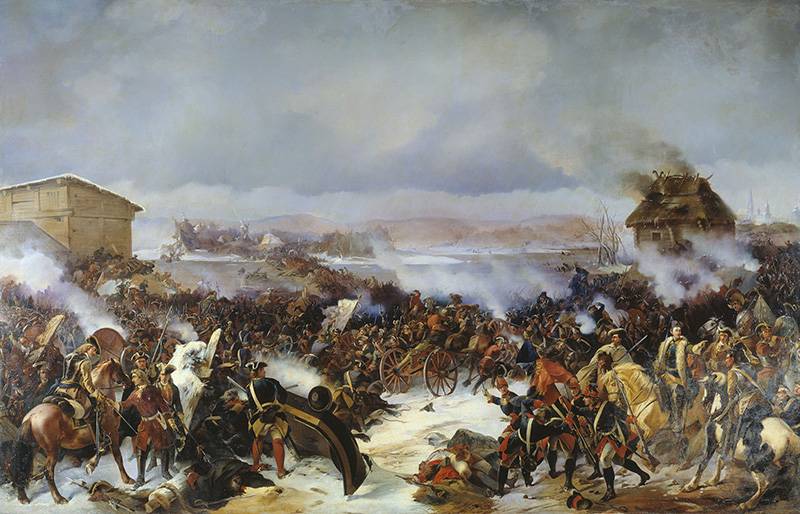
The Duke de Croix and part of the foreign officers, fearing for their lives, because the subordinates seriously believed that “all Germans are traitors”, justifying such an unflattering opinion of themselves, they hurried to surrender to the Swedes. Confidence in foreigners was undermined, and soon Peter I issued an order according to which in the army the number of officers from the “Germans” could not exceed one third. Yet De Lacey, being a junior officer, along with the whole army underwent the Narva Confusion and continued his service.
The first failures did not stop Peter - the war gained momentum. Intoxicated with victory, Karl went to Poland, and Russia had the opportunity to put its army in order. Already in 1701, General-in-Chief Boris Sheremetev invaded Livonia, and Erestfer was decisively defeated by General Schlippenbach's detachment. This was Russia's first major victory in the Northern War. During this campaign, the Irish de Lacey, who served under Sheremetev, was promoted to captain. Sheremetev himself received a field marshal and was elevated to the count's dignity. In 1702 and 1703, he continued his successful operations in Livonia, taking possession of several fortresses, including Noteburg and Nienschanz.
Meanwhile, Karl XII decided to pause in active operations against the Russian army and focused his efforts on Poland. The Swedish monarch planned to dismiss August II, who was also the Saxon elector, and replace him with someone more loyal and pliable to the will of Stockholm. Thus, Russia, firstly, would have lost its main ally, and secondly, an additional buffer zone would have arisen between the Russian and Swedish possessions. The Swedish army invades the Polish-Lithuanian Commonwealth. As a result of a complex of military and political actions, Augustus II was deposed, and his place was taken by the Swedish candidate Stanislav Leschinsky. Not everyone in Poland agreed with this situation, and Sandomierz Confederation gathered in 1704 declared Leshchinsky an illegal king. The representatives of the Confederation and the Russian side signed the Narva Treaty, according to which the Polish-Lithuanian Commonwealth officially joined the alliance against Sweden.
Russia sent troops into Poland, and it became the scene of hostilities between the Russian and Swedish armies. De Lacey was in the contingent that participated in the Polish campaign - in 1705, the Irishman was promoted to major, and in the 1706 decree Peter I was appointed lieutenant colonel in the 1 Nevsky Infantry Regiment. This stage of the war, after some setbacks, ended in October 1706 with the convincing victory of the army of Menshikov over the Swedes at Kalisch, however, attracted by multi-vector tendencies and fearing the safety of Saxony, where Karl XII himself invaded, Augustus went to negotiations with the enemy and agreed secretly from his Russians Allies on a separate peace treaty, abandoning the Polish crown in favor of Leschinsky.
Russia turned out to be alone against Sweden. Now Karl decided to deliver a crushing blow to his main opponent. He begins to prepare a trip to the east. Rumors of the enemy's big preparations began to spread, and doubts about their authenticity disappeared when the Swedish army in September 1707 moved from Saxony to Poland, where it was in replenishment and re-formation for almost 11 months. In July, 1708, the city of Charles XII, delivered the main forces to Smolensk. Peter I was waiting for the uninvited guests, his army was gradually strengthened qualitatively and quantitatively. In addition to the old formed new shelves. In 1707, Mr. de Lacey was promoted to colonel, and the next year, 1708, the day before the enemy invasion, by decree of Peter I, was appointed commander of the Siberian Regiment.
Meanwhile, Karl's army invaded Russia, and a Levengaupt corps with a huge train of several thousand carts with provisions and ammunition moved from Riga to Riga. Peter I and Menshikov, commanding Russian troops, retreated deep into their territory, trying to deprive the enemy of any supplies. The rear of the Swedes mercilessly disturbed the cavalry. Critically assessing the situation and realizing that without a heavy siege artillery to take a well-fortified Smolensk will not succeed, the king changes the original plans. Moreover, from Ukraine, for some time now, curious signals began to come in from the decision-maker to join the European values of the local hetman Mazepa. Getman lavished promises and eventually seduced the Swedish king of colorful history about the allegedly waiting for his 50-thousandth army and the huge reserves of provisions, concentrated prudent Mazepa in Baturin.
Karl turns his army south, at the same time issuing Leuvengaupt new instructions. However, the reality turned out to be cruel both to the traitor to the European integrator, and to the stupid one who believed him in the king. Arriving in the Swedish camp, Mazepa brought with him only a few thousand Cossacks, whose number was steadily declining. The warehouses in Baturin were farsightedly destroyed by Menshikov, and the Russian cavalry followed the enemy on their heels. Lewenhaupt, who was dragging along with a wagon train, was overtaken by Lesnaya and defeated - most of the reserves became Russian trophies.
In November 1708, Karl entered Romny, where his army for the first time in a long time got rest. But the general situation of the Swedes was very difficult - they were far from their main bases and warehouses, around there was a hostile population. The king had to move further south, where there were regions not ravaged by war. A month later, the Swedish garrison, left in Romny, was knocked out, and de Lacey, who distinguished himself in this case, was appointed commandant of the city. The Irishman did a lot to ensure that the Romny did not become more prey to the enemy, - under his leadership the city was greatly fortified. Earlier, during the crossing of the Desna, Colonel de Lacey was wounded, but remained in the ranks. For their services, already noticed by the king, the Irishman was appointed to command the Grenadier regiment.
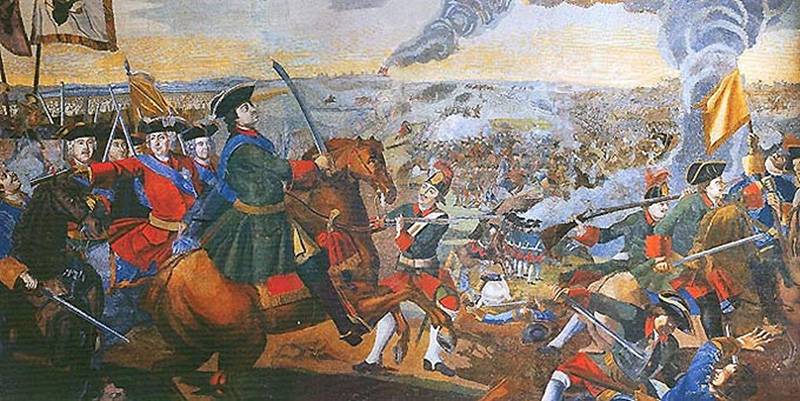
The Swedish campaign was nearing its climax. Winter 1708 – 1709 cost much to foreign "guests" - many soldiers were frozen or died from malnutrition and disease. In the spring of 1709, the city of Karl experienced an acute shortage of not only provisions, but also ammunition. Here, Mazepa, who was spinning at hand, provided him with an invaluable service, informing him that there was a place in which large reserves were concentrated in case of a reflection of Tatar raids. The place was called the city of Poltava. In the unfolding events, de Lacey took an active part: his regiment was in the center of the famous battle of Poltava, where the colonel was seriously wounded in the head. Hike to Ukraine ended for Karl and his ally Mazepa a complete disaster. The battle hardened army, which had colossal experience, was destroyed - its remnants surrendered to Perevolochny Russian. The king and hetman, leaving everything, fled to the Turkish fortress Ochakov.
After such a grand victory, the allies that had previously beaten by the Swedes and violated Russia's loyalty began to crawl out of their cracks. The Northern Union was restored - Denmark and Saxony joined in the fall. Peter I, for his part, pledged to intensify hostilities in the Baltic States. In 1710, General Marshal Sheremetev was sent there. His troops laid siege to Riga and, after a long siege and bombardment, took it. De Lacy, who was a member of this large-scale operation and deserved the favor of his superiors with his courage, was appointed the first Russian commandant of Riga.
Sweden was still a strong adversary, but its already limited resources gradually melted away. Carl, who was on an unofficial visit after fleeing from under Poltava in the Turkish possessions, made great efforts to persuade the Brilliant Port to war with Russia. In 1710, Peter I began to receive information about the persistent agitation carried out by the Swedish king. The ambassador in Constantinople, Tolstoy, still in 1709, began to seek the expulsion of a violent monarch from the Turkish limits, but Istanbul was in no hurry to deny that in hospitality. Finally, the combined efforts of Charles XII, who was bored in the Crimea by Khan Devlet Giray II and the war party at the Sultan's throne, were crowned with success: the Ottoman Empire declared war against Russia.
Peter I decided to undertake a campaign deep into the Balkan Peninsula, counting on the support of the local Orthodox population. Along with other officers - foreigners in the Russian service, he took part in the campaign for a long time and was noticed by the king de Lacey. However, at the end of June 1711, the Russian army was surrounded by the army of Grand Vizier Baltaji Mehmed Pasha, many times superior to her. The situation was critical - food and ammunition were running out in the camp. During the negotiations that began, the Prut Peace Treaty was concluded. Not the last role was played by impressive gifts, eagerly accepted by the vizier. In response to the furious reaction of Karl, who was under the Turks, the grand vizier reasonably remarked that there would be a disorder if all the kings and kings were away from their state. The emphasis was clearly on the word "kings". For participation in the Prut campaign, De Lacey was awarded the title of brigadier. The war with Sweden continued. In 1712, for the successful implementation of the procurement of food and fodder for the army in Poland, the Irishman was promoted to major general. Then followed the fighting in the Baltic States, where he took part in the battle of Friedrichstadt under the command of Peter I, and then in the siege and assault on Stettin in Swedish Pomerania.
Pierce Edmund de Lacey had to go to sea operations. In 1716, the Astrakhan regiment and two regiments of guards put on galleys made the transition to Wismar under his command and landed on the shore and embarked on a siege of the city. In 1719, a special naval landing expedition was sent to the coast of Sweden under the command of Admiral Apraksin. It consisted of two landing detachments: one was commanded by Apraksin himself, at the head of the other was de Lacey. Having landed on the Swedish coast and scattered small barriers of enemy troops, the paratroopers inflicted great damage on the military production of Sweden, ruining and destroying weapons workshops, factories and warehouses. Similar raids were practiced in 1720. The resources of Sweden were finally exhausted, and the Russian amphibious assault forces near Stockholm made a strong impression on his sister, Queen Ulrike Eleanor, who occupied the throne after the death of Charles XII. For the competent leadership of the troops, the fearlessness and courage shown by de Lacey during these campaigns, he was promoted to lieutenant general. The war with Sweden ended with the signing of the Nishtadt Peace Treaty, and the career of a native of the distant Green Island in Russia continued.
Old enemies, new allies
The state of health did not allow De Lacey to take part in the last large-scale military enterprise of Peter - the campaign against Persia. After accession to the throne of Catherine I, the Irishman was awarded the Order of Alexander Nevsky on the day of its establishment, 21 May 1725. In August of the same year, he became a member of the Military Collegium, Commander-in-Chief of the armed forces in St. Petersburg, Novgorod Province, Estland and Karelia. In 1727, he again becomes the governor of Riga. In the short reign of Peter II, when the reins of government were concentrated on the still powerful Menshikov, de Lacey had to perform a rather delicate mission, where the line between war and politics was thoroughly blurred. In an effort to subordinate Kurland to Russian influence and, accordingly, to prevent the Poles from entering there, Menshikov ordered de Lacey to expel the notorious Moritz of Saxony who was there uncomfortably there, trying to seize the throne of Courland. In 1727, Mr. de Lacey entered the territory of the duchy, along with three regiments of infantry and cavalry, and simply arrested the hapless claimant. Subsequently, Moritz managed to escape in a boat, after which he entered into a correspondence with De Lacey, offering him to become an intermediary in negotiations with Menshikov. Courland remained in the field of Russian influence, and the Irishman returned to the capital just when Menshikov was deposed.
The reign of Anna Ivanovna was not distinguished by calmness in foreign policy. In 1733, the war for the Polish inheritance unfolded, and Russia took an active part in it. Two persons claimed the throne of Rzeczpospolita, and the opinions of European states were divided. The test of the French king Stanislav Leschinsky was supported by Versailles. On the side of the son of the late August II - the Elector of Saxony, Friedrich August - was made by Russia and Austria. De Lacey was entrusted with command over the 20-thousand army, with which he was ordered to enter the territory of the Commonwealth to encourage the candidate supported by Russia. On September 22, near Warsaw, in Grochów, under the protection of Russian bayonets, a Diet was assembled, which was disciplined on the throne of the Saxon Elector under the name of August III.
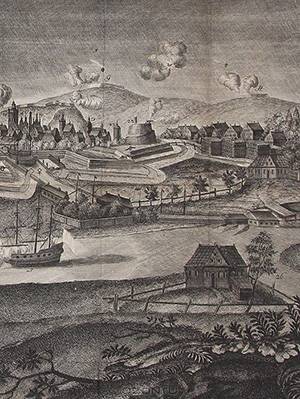
Having secured the throne to the right challenger, De Lacey set about restoring order in Poland. 4 January his troops captured the fortress of Torun, after which he began the siege of Gdansk. Soon, the leadership of the siege passed to a no less glorious foreigner in the Russian service of Burkhart Minich, and de Lacy's efforts were aimed at preventing the besieged city from helping the supporters of Leshchinsky. Soon, in spite of the reinforcements arriving from France in the person of the thousandth troops of the regular troops, Gdansk fell. For these merits, the Irishman was awarded the rewarded reward of the Commonwealth - the Order of the White Eagle.
The unfavorable state of affairs in the Leszczynski party in Poland led France to intensify its efforts on the western frontiers of Austria. The concerned emperor of the Holy Roman Empire, Charles VI, sought help from his Russian allies. De Lacey was ordered to march through Europe to the Rhine. During this difficult transition, his troops struck local inhabitants with unprecedented organization and discipline. There was no violence, no looting - the order in the Russian army deserved the praise of one of the most famous commanders of the time, a former opponent and old friend still in the Augsburg War, Yevgeny of Savoy. However, they did not have to fight the French on the Rhine - not wanting to continue the war, Paris went to negotiate, and the Polish throne was finally assigned to Augustus III. On the way back, at the insistence of Emperor de Lacey, he visited Vienna, where a magnificent reception was arranged in his honor, the culmination of which was the presentation to the commander of the portrait of Charles VI, strewn with diamonds, a cash gift and a field-marshal's baton. A month before that, in February 1736, Anna Ivanovna had already granted Lacey the title of Field Marshal of the Russian Army. He was ordered to urgently arrive at Azov - barely ending one war, Russia entered the next, this time with the Ottoman Empire.
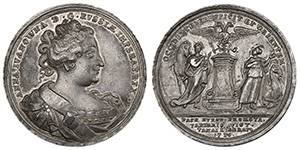
On the way to the theater of military operations in the Little Russian steppes, the motorcade de Lacey, guarded by the Cossacks, was attacked by a Tatar squad that was engaged in a common business: looting and capturing prisoners. The field marshal managed to fight off and ride off. Arriving at Azov, De Lacey immediately began to organize siege works - his efforts were crowned with success. 20 July 1736, the fortress of Azov fell, and Field Marshal was injured. For this merit, the commander was awarded in 1737 the highest award of the Russian Empire - the Order of St. Andrew the First-Called.
The Irishman began preparations for a campaign in the Crimea, since he was rightly considered the main threat to Russia in the south. The first trip to the Crimea was undertaken already in 1737. Fatih Girey, who was waiting for the Russian Crimean Khan, took up positions in the well-fortified Perekop position. But the commander did not even think of attacking the enemy in the forehead. To invade the Crimea, he chose a different path - through the Arabat arrow, supported by the ships of the Azov flotilla Rear Admiral Bredal. Learning about the plan of the commander, almost the entire generals were indignant and began to dissuade de Lacey. He was adamant and offered those who disagree to leave the army and leave. As a seriousness of his intentions, he even ordered two hundred dragoons to be escorted. Such measures reassured skeptics, and the operation was successfully carried out - the Russian army entered the Crimea in the place where no one was waiting for its appearance. Upon learning of the appearance of the enemy rear, the Tatars hastened to retreat to the mountains. Having plundered many Tatar villages for their constant and merciless raids on the southern borders of Russia, de Lacy leaves Crimea.
In the campaign of the next 1738, he repeated the operation: again the Tatars and Turks were waiting for the Russian army at Perekop, and again Field Marshal outwitted the enemy. Now his troops entered the Crimea on the bottom of the dried-up section of Lake Sivash and forced Perekop to capitulation, where about two thousand Turks were captured. Once again, walking with an iron broom on the territory of the restless khanate, in October 1738, the Russian troops returned to their winter quarters. In 1739, Mr. de Lacey was granted a title of count, and in 1740, in commemoration of the signing of the Belgrade Peace with the Ottoman Empire, the earl was granted a sword, studded with diamonds and a pension of three thousand rubles.
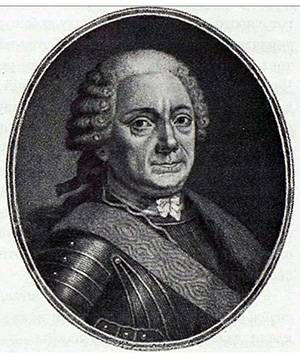
After the war, the field marshal began to perform the duties of the Livonian Governor. But Russia could never boast of the long-lasting friendliness of its neighbors. In 1741, refusing to formally recognize the baby John Antonovich as emperor and never ceasing to hope for revenge for the Poltava and Gangut cuffs, Sweden declared war on the empire. Once again, de Lacey, or, as he was now called in the Russian manner, Petr Petrovich Lassi was in demand in his main specialty. The ruler, Anna Leopoldovna, appointed him Commander-in-Chief of the Russian army. The Swedes were an old and familiar enemy field marshal. A few weeks after the start of the war, Lassi defeated the enemy 4-thousandth unit of Major-General Wrangel, taking him prisoner along with 1200 other Swedes. In August 1742 by the efforts of the commander, the Swedish offensive was completely disrupted - Helsingfors and a large number of prisoners were taken.
Ascended to the throne as a result of a palace coup, Elizaveta Petrovna presented the diamond ring to the commander. Having quickly spent revanchist sentiments, the Swedes in 1743 asked for peace. The fast and successful ending of the war is largely due to Lassie himself, who was very popular among the troops. To return from Finland to St. Petersburg, the empress sent her own yacht for the commander, generously rewarding him. After this, the last in his life war, Lassi held the post of Governor of Livonia. 14 died on April 1751 at the seventy-fourth year of life.
De Lacey was distinguished not only by his courage, courage and military leadership talent. He was known for his complete indifference to court intrigues and the power struggle for power. Peter Petrovich Lassi, even as a field marshal, remained a soldier, whose main duty was to protect the Fatherland. So he remained in history - the Irishman, who found his second homeland in Russia.
Information